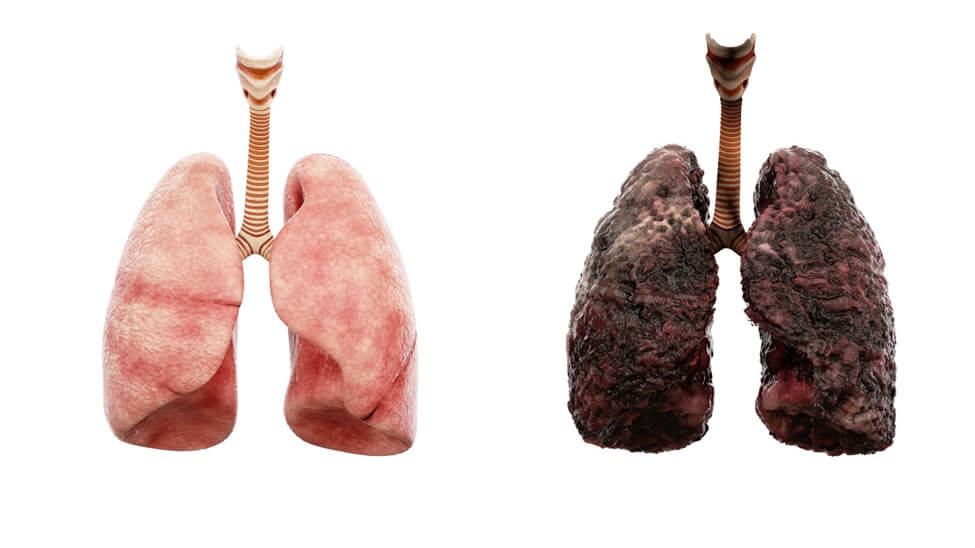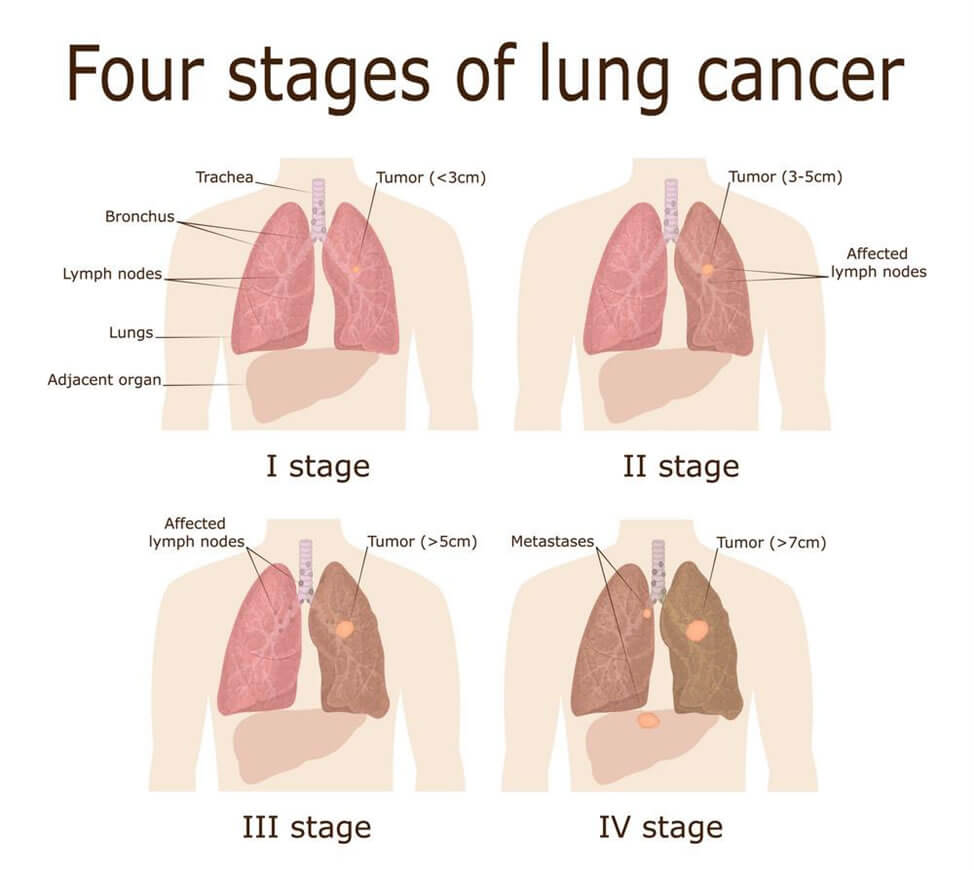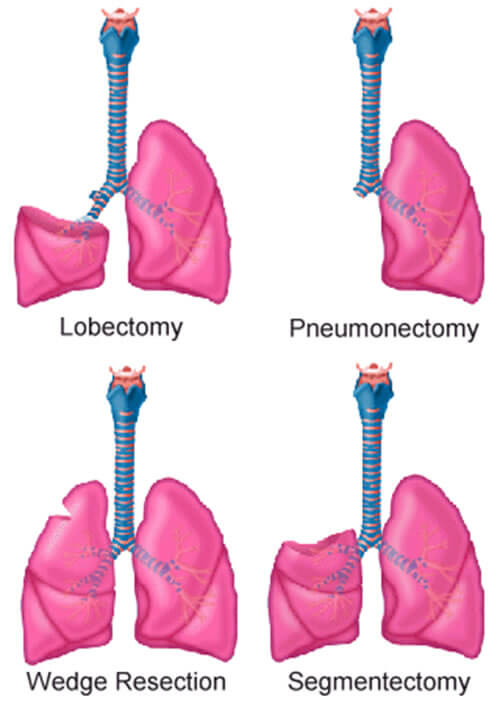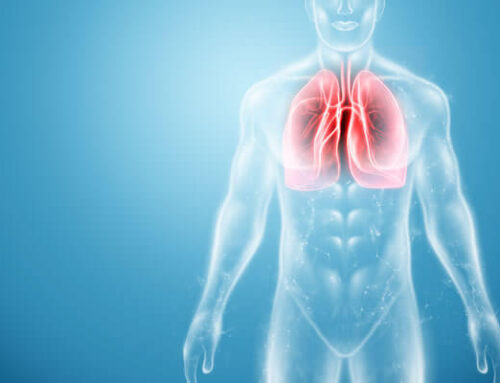Lung cancer is one of the most aggressive cancers which is rapidly becoming the most fatal cancer worldwide. The occurrence of lung cancer is nearly equal in both men and women. It seems that lung cancer and breast cancer have quite tough competition to rank first in being lethal among women. There is strong evidence that tobacco smoking and other environmental carcinogens are responsible for driving mutations that result in transformation of benign progenitor cells in the lung into neoplastic cells possessing all hallmarks of cancer. Although quitting smoking lowers the risk of lung cancer yet the irreversible damage to the baseline and genetic changes favor the development of lung cancer. Passive smoking is also equally responsible for its development.
 Enough damage to lungs is anticipated before the occurrence of any symptoms. Initially, it is the chronic cough which comes to surface. Hoarseness, chest pain, shortness of breath, wheezing and hemoptysis are some other characteristic symptoms. Since lung cancer is usually diagnosed by routine X-Rays and CT scans or when the condition of patient has worsened therefore, symptoms are accompanied with complicated conditions like pleural effusion, pneumonitis, hepatomegaly and pericardial effusion. By the time patient consults a doctor there is high chance the cancer has metastasized presenting conditions like Pancoast syndrome, atelectasis, dysphagia and blurred vision. Weight loss, fatigue, mood changes and headaches are common associations.
Enough damage to lungs is anticipated before the occurrence of any symptoms. Initially, it is the chronic cough which comes to surface. Hoarseness, chest pain, shortness of breath, wheezing and hemoptysis are some other characteristic symptoms. Since lung cancer is usually diagnosed by routine X-Rays and CT scans or when the condition of patient has worsened therefore, symptoms are accompanied with complicated conditions like pleural effusion, pneumonitis, hepatomegaly and pericardial effusion. By the time patient consults a doctor there is high chance the cancer has metastasized presenting conditions like Pancoast syndrome, atelectasis, dysphagia and blurred vision. Weight loss, fatigue, mood changes and headaches are common associations.
According to the microscopic appearance of neoplastic cells, lung cancer is classified into two types;
- Small Cell Lung Cancer is the most aggressive lung cancer and is found only when it has extensively metastasized. It comprises up to 10-15% of all cases. SCLC is commonly caused by cigarette smoking. Medical experts define two stages of SCLC;
- Limited stage, in which the cancer is limited to one lung and the surrounding lymph nodes.
- Extensive stage, in which the cancer spreads throughout the lung, to the opposite lung, to distant organs, to bone marrow, to the fluid surrounding lungs and to the lymph nodes on the opposite lung.
- Non-Small cell Lung Cancer is the most common type of cancer. It comprises up to 85% of total cases. Medical experts define six stages of NCLC;

- Hidden, imaging scans does not show cancer but cancerous cells appear in mucus and phlegm.
- Stage 0, cancerous cells are present in the top layers of airway only.
- Stage I, cancer is less than 5 cm in size and doesn’t spread to other areas.
- Stage II, cancer is 5 cm and reaches the lymph nodes around lung or 7 cm in size reaches surrounding tissues but not lymph nodes.
- Stage III, cancer spreads to lungs and lymph nodes of the opposite side as well as above the collarbone.
- Stage IV, cancer spreads extensively and reaches distant organs like brain and bones.
Treatment options include surgery, chemotherapy and radiation therapy. Various kinds of surgery include
Wedge resection, to remove only a part of lung which contains tumor.
Segmental resection, to remove slightly big portion of lung but not complete lobe or lung.
Lobectomy, to remove complete lobe of damaged lung.
Pneumonectomy, to remove complete lung.
 To live a healthy life quit smoking now.
To live a healthy life quit smoking now.

Heale Medical offers technology-enabled primary care that is proactive, comprehensive, and centered around our patient’s needs. Our primary clinic is located near you in 8300 Boone Boulevard, Suite 150, Vienna, VA 22182.
Our primary care physicians provide comprehensive medical care throughout the Washington, DC Metropolitan area including Alexandria, Arlington, Annandale, Burke, Centreville, Clifton, Dunn Loring, Falls Church, Fairfax, Fairfax Station, Franklin Farm, Herndon, Lorton, Merrifield, McLean, Oakton, Seven Corners, Springfield, Reston, Tysons Corner, Vienna, Washington DC, West Springfield, Wolf Trap and more.




